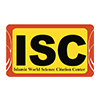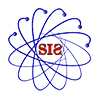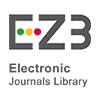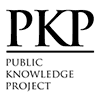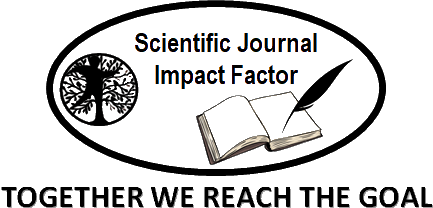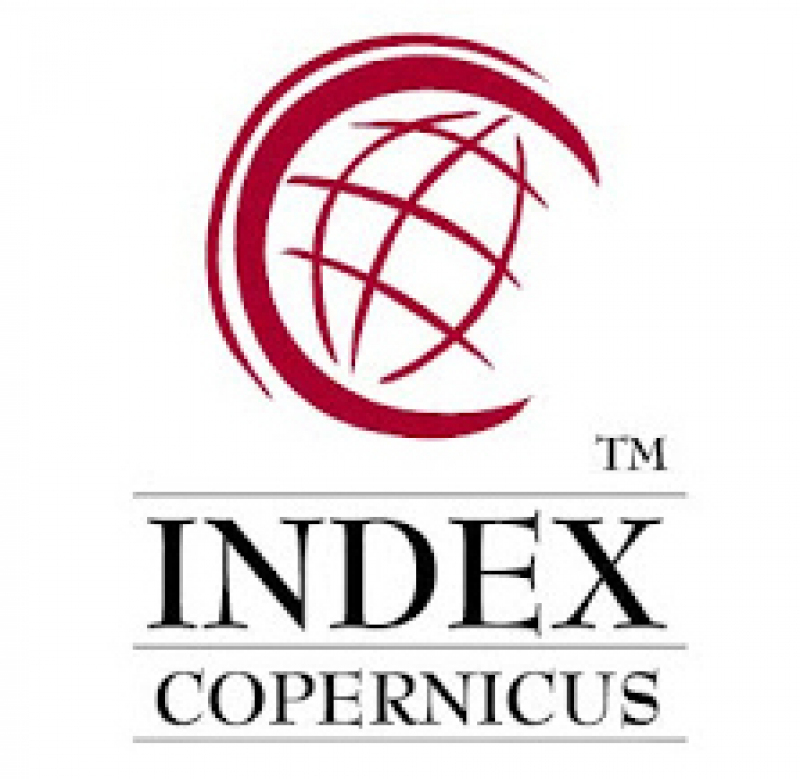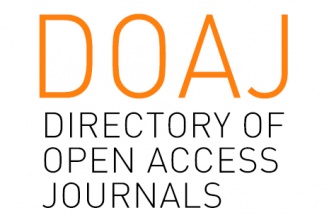A Comparative Study of the Impact of Technological Policymaking on Environmental Security in the United States and the European Union
Abstract
In the era of the Fourth Industrial Revolution, new technologies have developed with unprecedented speed, efficiency, and convergence, bridging the digital, physical, and biological boundaries. At the same time, environmental crises have become a serious threat to global security. The United States and the European Union have been designing and implementing policies to protect the environment since the 1960s. Using a documentary study method and a descriptive-analytical approach, this article seeks to find out what impact the technological policies of the European Union and the United States have had on environmental security. The results of the research indicate that alignment between technological policies and environmental goals is a prerequisite for achieving sustainable development and ensuring environmental security. The European Union has been able to create effective synergies between technology and environmental goals by developing comprehensive policies such as the Lisbon Strategy, Europe 2020, and Horizon Europe, as well as implementing programs such as the Green Deal, the circular economy, and the clean energy transition. In contrast, the United States, despite political fluctuations in the environmental field, has been developing clean technologies and optimizing energy consumption through technological innovations in the private sector. However, recent geopolitical challenges, such as the Ukraine war, have disrupted environmental policies in both regions, such as budget cuts, a partial return to fossil fuels, and a focus on short-term energy security.
Keywords
Full Text:
PDFReferences
Ansari, M. (2025). China and the United States’ grand strategy in West Asia (2008–2024). American Strategic Studies, 5(2), 179–201. https://doi.org/10.47176/asr.2025.1294.
Azin, S., Hedayati Shahidani, M., & Jansiz, A. (2024). Artificial intelligence and strategic stability: A cognitive lesson in the development of military dimensions of artificial intelligence in the U.S. and Russia. American Strategic Studies, 15(4), 95–120.
Alison, G. (2017). Destined for war: Can America and China escape Thucydides’ trap? Houghton Mifflin Harcourt.
Atamanenko, I., & Piddubnyi, O. (2023). The impact of the Russian Ukrainian war on EU energy security. Saeculum XXI. https://ahpsxxi.org/index.php/journal/article/view/94.
Bahrke, M., & Grammenou, C. (2020). Horizon Europe: The EU research and innovation framework programme 2021–2027. European Commission. https://ec.europa.eu/info/horizon-europe_en.
Brookings Institution. (2023). The AI competition between the U.S. and China: Geopolitical and economic implications. https://www.brookings.edu/research/the-ai-competition-between-the-us-and-china/.
Bush, V. (2010). The 2000s: A decade of transformation in U.S. technology policy. National Academies Press.
Castells, M. (2000). The rise of the network society (2nd ed.). Blackwell Publishers.
Commission of the European Communities. (1986). Framework programme of community activities in the field of research and technological development (1987–1991). Brussels: Commission of the European Communities.
Congress.gov. (2022). H.R.4346 - CHIPS and Science Act of 2022. https://www.congress.gov/bill/117th-congress/house-bill/4346.
DOE (U.S. Department of Energy). (2023). Artificial intelligence and the future of energy.
Daraj, H. (2024). U.S. strategic policy to prevent China’s power expansion in the South China Sea. American Strategic Studies, 4(16), 107–136.
European Climate, Infrastructure and Environment Executive Agency. (2024). Horizon Europe strategic plan 2025–2027. Publications Office of the European Union. https://doi.org/10.2777/092911.
European Commission. (2010a). Lisbon strategy evaluation document. Brussels, 2.2.2010 SEC (2010) 114 final. https://ec.europa.eu/transparency/regdoc/rep/2/2010/EN/SEC-2010-114-F1-EN-MAIN-PART-1.PDF.
European Commission. (2023). Impact of the Russia-Ukraine war on the EU’s energy security, innovation, and environmental policies. https://ec.europa.eu/info/publications/impact-russia-ukraine-war-eu-energy-security-innovation_en.
European Commission. (2024). Horizon Europe strategic plan 2025–2027. Brussels: Directorate-General for Research and Innovation. https://research-and-innovation.ec.europa.eu.
European Parliament. (2000). Lisbon European Council 23 and 24 March 2000: Presidency conclusions. https://www.europarl.europa.eu/summits/lis1_en.htm.
Executive Office of the President. (2022). U.S. innovation strategy: Ensuring American leadership in critical and emerging technologies. Office of Science and Technology Policy (OSTP). https://www.whitehouse.gov/ostp.
Falk, M. (2009). High-tech exports and economic growth in industrialized countries. Applied Economics Letters, 16(10). https://doi.org/10.1080/13504850701222228.
Falk, M. (2023). Weaponized energy and climate change: Assessing Europe’s response to the Ukraine war. LSE Public Policy Review. https://doi.org/10.31389/lseppr.78.
Gaddis, J. L. (2005). The Cold War: A new history. Penguin Press.
Gardner, D. M., Johnson, F., Lee, M., & Wilkinson, I. (2000). A contingency approach to marketing high technology products. European Journal of Marketing, 34(9/10), 1053–1077.
Ghaffarizadeh, M., Shafiei, N., & Vosoughi, S. (2025). The return of great power competition: The U.S.–China techno-commercial confrontation. American Strategic Studies, 4(3), 67–94. https://doi.org/10.47176/asr.2024.1258.
Hafner, K., & Lyon, M. (1996). Where wizards stay up late: The origins of the internet. Simon & Schuster.
Kim, J., & Yoo, J. (2019). Science and technology policy research in the EU: From framework programme to Horizon 2020. Social Sciences, 8(5). https://doi.org/10.3390/socsci8050153.
Kok, W. (2004). Facing the challenge: The Lisbon strategy for growth and employment. https://repositorioinstitucional.ceu.es/bitstream/10637/2481/1/Kok_W.pdf.
Krastev, I., & Leonard, M. (2023). Fragile unity: Why Europeans are coming together on Ukraine (and what might drive them apart). ECFR. https://ecfr.eu/publication/fragile-unity-why-europeans-arecoming-togethero-ukraine/.
Kamal Zare, H., & Kalantari, F. (2025). Hybrid warfare analysis from the perspective of U.S. strategic documents: Capabilities and priorities. American Strategic Studies, 5(2), 11–40. https://doi.org/10.47176/asr.2025.1287.
Lawn, M. (2002). A European research area? European Educational Research Journal, 1(1).
Mowery, D. C., & Rosenberg, N. (1998). Paths of innovation: Technological change in 20th-century America. Cambridge University Press.
President’s Council of Advisors on Science and Technology (PCAST). (2005). The impact of nanotechnology on the environment. Executive Office of the President of the United States.
Reillon, V. (2017). Understanding EU research and innovation policy: The framework programme in context. European Parliamentary Research Service (EPRS), PE 599.360. https://www.europarl.europa.eu/thinktank/en/document/EPRS_BRI(2017)599360.
Reuil, G., Cvijanović, V., Delera, M., & Diafas, I. (2024). Horizon Europe support for the European Green Deal. Publications Office of the European Union. https://doi.org/10.2861/683027.
Roth, F., & Thum, A.-E. (2010). Does intangible capital affect economic growth? CEPS Working Document No. 335. Centre for European Policy Studies. https://www.ceps.eu/ceps-publications/does-intangible-capital-affect-economic-growth/.
Sadeghi Kia, M. A. (2021). Mission-oriented innovation policy: Challenges and opportunities. Science and Technology Policy Letter, 11(1), 113–128.
Shoukat, A., Ali, S., & Yaseen, M. (2023). The impact of the Russia Ukraine war on EU energy security. Social Sciences Spectrum, 9(1), 52–66. https://sss.org.pk/index.php/sss/article/view/177.
Single European Act. (1987). OJ L 169, 29.6.1987, pp. 1–28. https://eur-lex.europa.eu/legalcontent/EN/TXT/?uri=celex%3A11986U%2FTXT.
Smith, A., & Johnson, R. (2021). Environmental policy and technological innovation in the EU and US. Cambridge University Press.
U.S. Department of Energy (DOE). (2023). Energy efficiency and renewable energy programs. https://www.energy.gov/eere.
U.S. Environmental Protection Agency (EPA). (2021). History of the Clean Air Act. https://www.epa.gov/clean-air-act-overview.
U.S. National Science and Technology Council. (2021). Critical and emerging technologies list update. Executive Office of the President. https://www.whitehouse.gov/ostp/.
DOI: http://dx.doi.org/10.18415/ijmmu.v12i10.7190
Refbacks
- There are currently no refbacks.
Copyright (c) 2025 International Journal of Multicultural and Multireligious Understanding

This work is licensed under a Creative Commons Attribution-NonCommercial-NoDerivatives 4.0 International License.
https://ijmmu.com
editor@ijmmu.com
facebook.com/ijmmu
Copyright © 2014-2018 IJMMU. All rights reserved.







